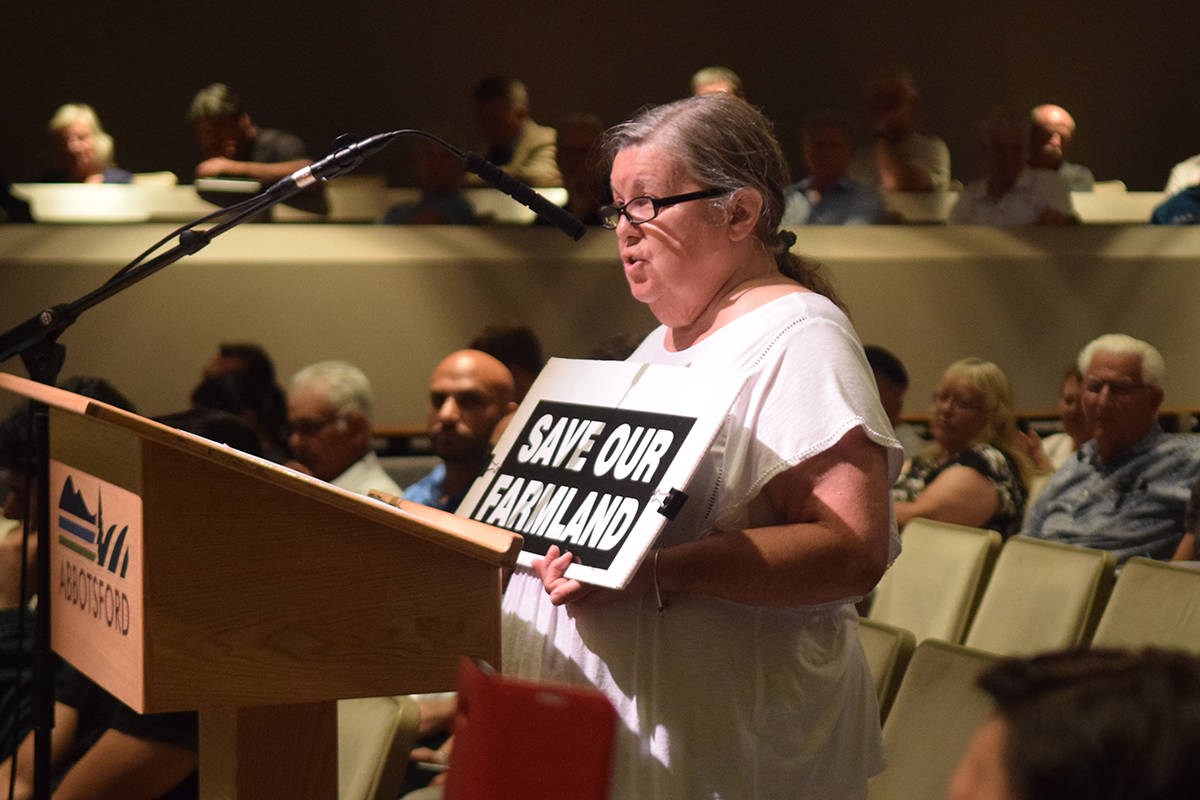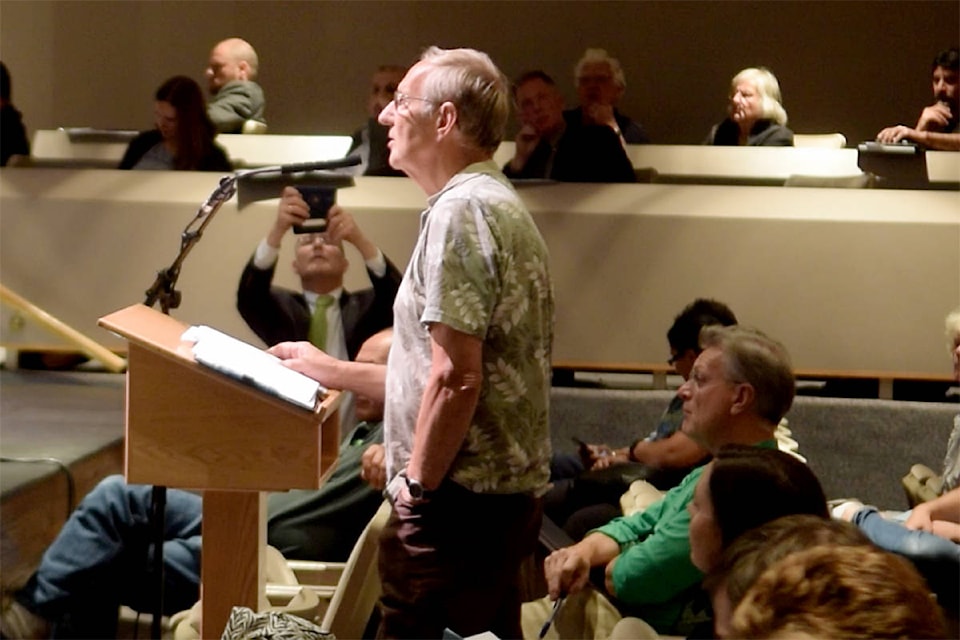They came to speak by the dozens.
For more than four hours, environmentalists, business owners, Bradner residents, out-of-towners, and many more – more than 50 in all – rose to advise council on whether the city should ask for the removal of two large blocks of farmland from the ALR in order to provide more room for industrial growth.
Most spoke against the idea, but others were in favour, and a few proposed compromises for council to consider when it votes on the plan in two weeks.
What’s clear, after Monday’s marathon hearing, is that city politicians likely face their most controversial decision since the 2014 election installed Henry Braun in the mayor’s chair and brought four new councillors to the table.
The city has already received a report saying Abbotsford and surrounding communities are running out of land that can be used for large, regional industrial developments that can employ large numbers of people. During the Official Community Plan process, staff identified 700 acres split between two large blocks of land in the Agricultural Land Reserve (ALR) as potential areas for new industrial development.
One of those blocks is in Bradner, on the city’s western border with Langley and just north of Highway 1; the other is located just north of Abbotsford International Airport.
The Bradner block is adjacent to the Gloucester Estates industrial park and has been part of the Fraser Valley Regional District’s growth strategy for more than a decade.
Its soil had been described as mediocre at best, and a minority of properties in the area are intensively farmed. But those who live on the area’s acreages have strongly opposed previous plans to remove land from the ALR and celebrated a year ago when a private developer’s request for an exclusion was denied.
The block north of the airport has been subject to less vocal opposition, but it contains better soil and is intensively farmed. The city’s own Development Advisory Committee has given its support for the exclusion of only half of the properties.

(That committee supported the exclusion of the entire Bradner block; the city’s agriculture-oriented committee has supported excluding both blocks in their entirety.)
Most opposing comments Monday focused on a handful of themes: the danger posed to Bradner as a community, the importance of agriculture to the city, and environmental and food security issues.
Resident Cherry Groves said the plan would “destroy Bradner,” and suggested it would be hypocritical for politicians who regularly praise the community’s uniqueness and character to approve the proposal.
“Bradner is a community of farms and families, some who have been there for four or five generations,” she said. “We all choose to live there because it’s the way it is and we don’t want it to change. There’s no need for it to change. Abbotsford doesn’t need Bradner for industry, and Bradner doesn’t need or want industry.”
Groves and her neighbours are concerned about traffic and noise from industry, and about the potential for future exclusions once the land now under consideration is filled.
The properties comprise approximately one per cent of the total land in Abbotsford protected by the ALR. But several people said removing land would still harm farming, because it would promote speculation on agricultural properties and raise the price of farmland.
“Abbotsford is the envy of agricultural communities around B.C.,” said Mike Gildersleeve of Mission. “There is a slippery slope.”
Others noted the importance of local agriculture-oriented industries and said exclusions jeopardize that.
Several people, including Heather Lemieux, spoke about Nathan Creek, a salmon spawning tributary that has branches that run through the proposed area.
And Hank Roos of the Abbotsford-Mission Nature Club said the land is vital habitat for a number of endangered species.
Teenage Lefeuvre Road resident Miah Blais questioned how properties in the Bradner exclusion zone could be considered unfarmable when many have farm status for tax breaks and properties across the road will remain in the ALR.
While the bulk opposing comments focused on Bradner, many also suggested they were opposed to the removal of the farmland north of the airport.
But there was support, too, for the plan.
A growing city needs places for its residents to work, and businesses to contribute taxes for much-needed amenities, Abbotsford Chamber of Commerce executive director Allan Asaph told council.
“A strong industrial base also provides us with our shelter, clothing, research, technology, innovation and even food,” he said.
Patrick Selinger, who owns and lives on one of the properties within the Bradner block, said he has previously tried to farm the land, with little success.
“I am intimately aware of the limitations of that farmland,” he said. The largest laugh of the night came upon his observation that his nose suggested some could make a living in the area by paving over the land and profitly growing “illicit substances” in structures.
And Jordan Sangya, a manager of a Foy Street sawmill near Area B, said the land is needed for industrial expansion.
“I can only stack my wood so high,” he said. “It’s not economical for me to build a parkade … we only have so much land. It needs to happen. It can either happen in our community or we will go somewhere else.”
One idea that gained some traction among speakers came from Pete Scales, an owner of a local organic food processing facility, who said the city needs more industrial land, but suggested that a compromise might see any land withdrawn from the ALR reserved solely for agricultural science, processing and technology businesses.
Monday’s public hearing signals the end of the city’s formal consultation process. Council will reconvene on July 31 to vote on whether to exclude some, or all, of the farmland under consideration.
@ty_olsen
tolsen@abbynews.com
Like us on Facebook and follow us on Twitter.

